 STOWARZYSZENIE TEATR M U M E R U S
STOWARZYSZENIE TEATR M U M E R U S
 in Polish
in Polish
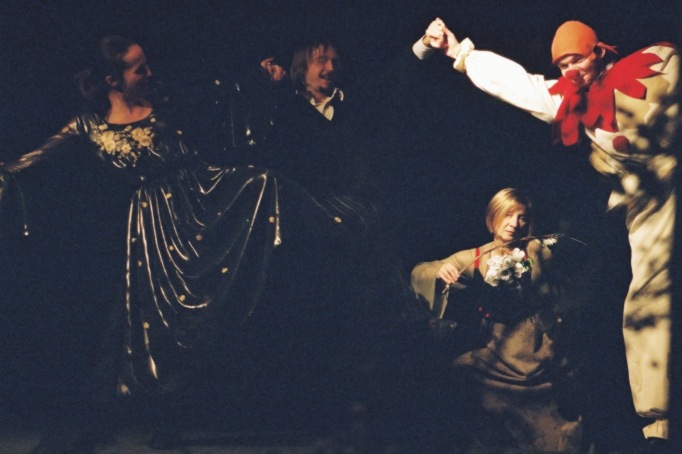

A performance inspired by paintings by
Witold Wojtkiewicz
and texts by Roman Jaworski
Players:

Robert Żurek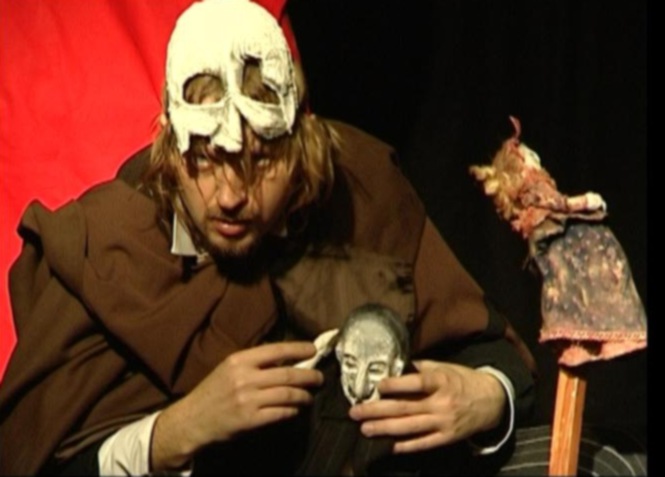 |
Olga
Przeklasa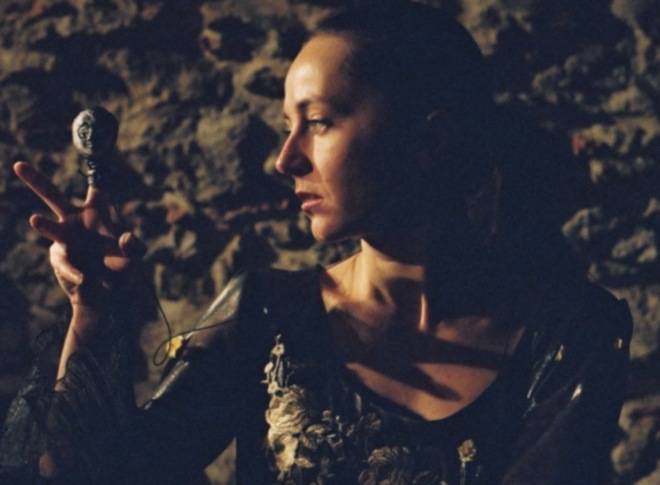 |
Karol Zapała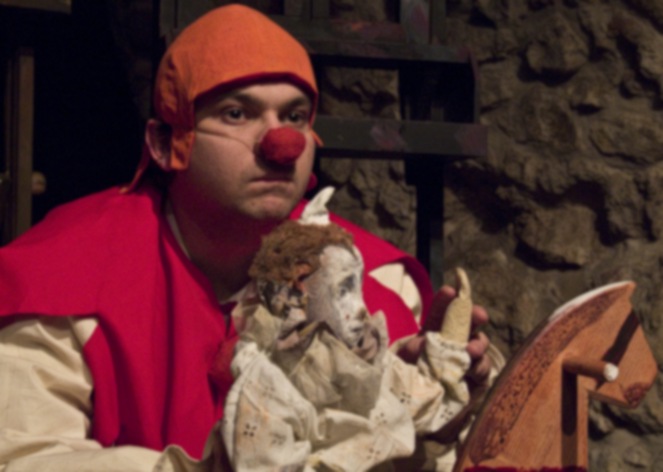 |
Ewa Ryks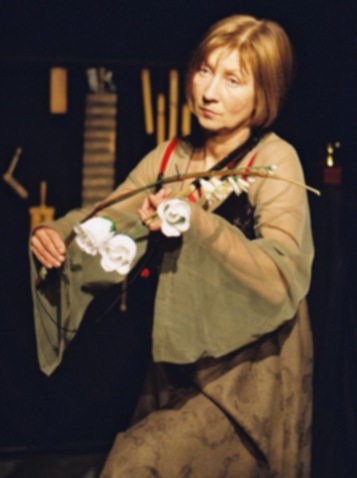
|
Scenario, directed & produced by:
Wiesław Hołdys
Paintings consultant
and
project of
costumes : Jan Polewka
Concrete
music
by
Ewa Ryks
Puppets &
masks by:Katarzyna
Jędrzejczyk
Production's cooperation by: Kinga
Piechnik, Maria Śmiłek, Michał Rdzanek
Costumes made by:
Beata Bobek i Elżbieta Rokita - PIN art
Sound recorded by:
Jerzy Zając - Studio 19
In
cooperation with
Independent Theatres Association STeN - Krakow
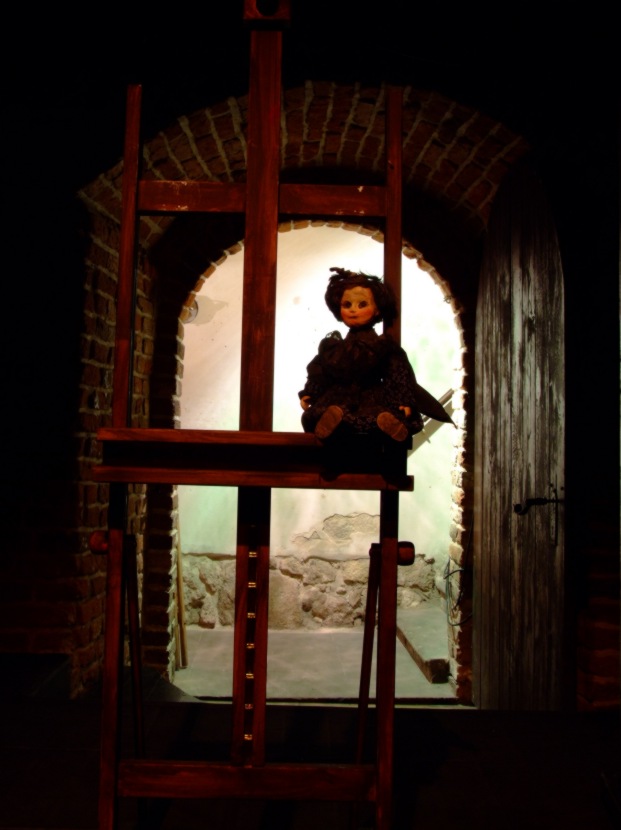 „Circuses
and Ceremonies” is a performance inspired by paintings by Witold Wojtkiewicz,
one of the most interesting and original Polish painters. Wojtkiewicz died
in 1909 at the age of 29. The world of his paintings, engravings and
drawings is inhabited by people changing into dolls and dolls transformed
into people, mysterious ceremonies turning into suspicious circuses, mad
people who keep returning to a magical circle, gardens overgrown with thick,
dry weeds, trees heavy with hanging pessimists, clowns and priests
imprisoned by masks, confectioneries offering poisoned cakes – all these
images are reflected in the theatre of actors, puppets, clowns and dancers.
The few words which are uttered during the performance have been taken from
texts by Roman Jaworski – a friend of Wojtkiewicz and a precursor of
literature exploring the boundary between worlds of reality and
hallucination.
„Circuses
and Ceremonies” is a performance inspired by paintings by Witold Wojtkiewicz,
one of the most interesting and original Polish painters. Wojtkiewicz died
in 1909 at the age of 29. The world of his paintings, engravings and
drawings is inhabited by people changing into dolls and dolls transformed
into people, mysterious ceremonies turning into suspicious circuses, mad
people who keep returning to a magical circle, gardens overgrown with thick,
dry weeds, trees heavy with hanging pessimists, clowns and priests
imprisoned by masks, confectioneries offering poisoned cakes – all these
images are reflected in the theatre of actors, puppets, clowns and dancers.
The few words which are uttered during the performance have been taken from
texts by Roman Jaworski – a friend of Wojtkiewicz and a precursor of
literature exploring the boundary between worlds of reality and
hallucination.
Opening night:
8th December
2007,Krakow, Teatr Zalezny
To watch a
trailer by Przemysław Pietras -
click here
To watch a
photo gallery by Arur Łoboda -
click here
 Thanks to Mr
Artur Wroński and
Restaurant
Chimera in Cracow w
Krakowie for helping in realisation of opening night. Thanks to Mr
Artur Wroński and
Restaurant
Chimera in Cracow w
Krakowie for helping in realisation of opening night.
|
Media's patrons |
 |
|
Cordially thanks to Mrs. Danuta
Zajda for helping in organisation of performances in
Theatre
Zalezny
|
|
The performance makes use of the following paintings by
Witold
Wojtkiewicz
Paintings
are annotated with quotations from texts by Roman Jaworski. |
|
- We must drive the whole world crazy and mad.
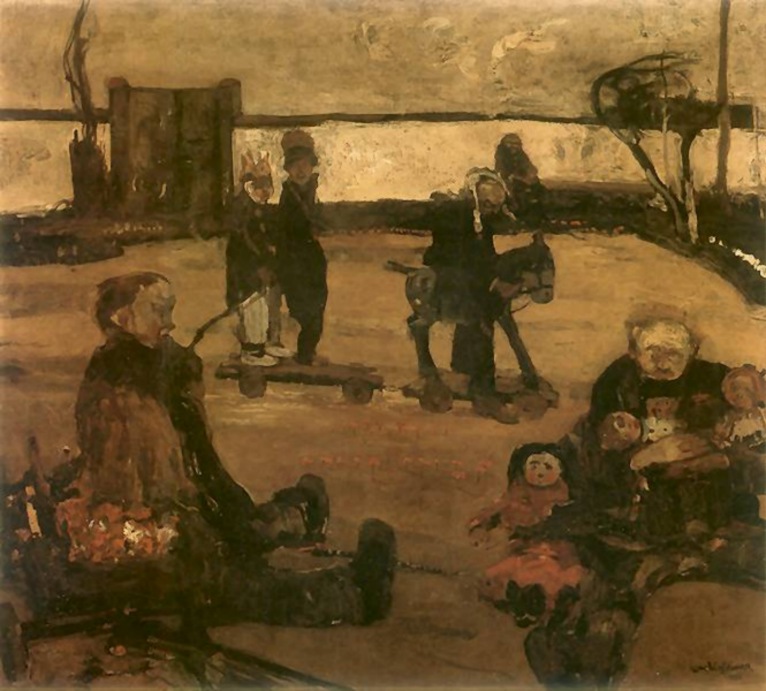
"Possession
– Circus of Madmen (1906)"
|
- It seems that I will not be able to turn crazy.
- Too bad, you’ve got to be able to do it if needs be.
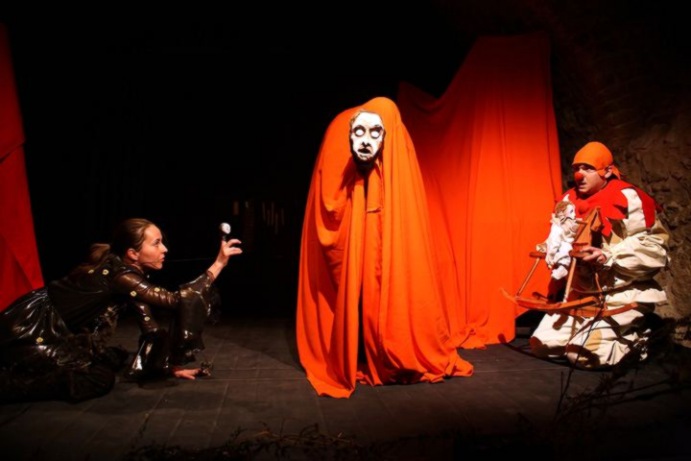
|
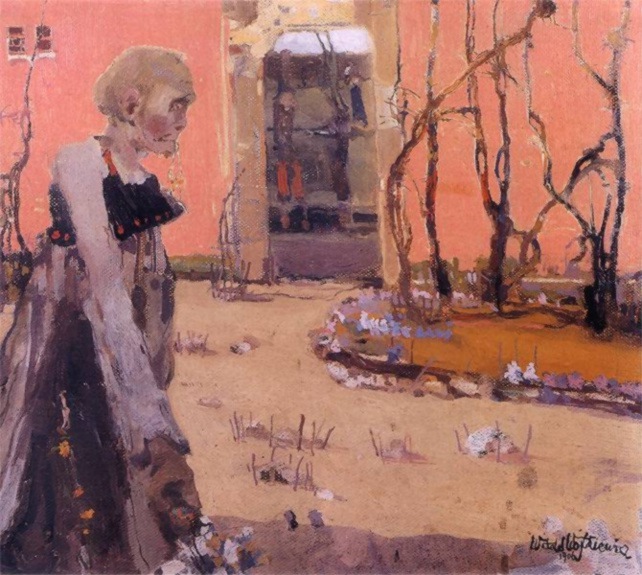
"Fantasy" (1908) |
Gentlemen, the horror is walking the streets, quite visibly.
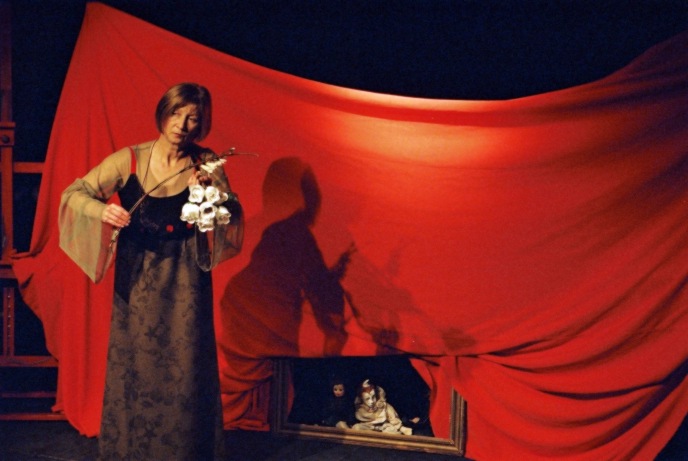
|
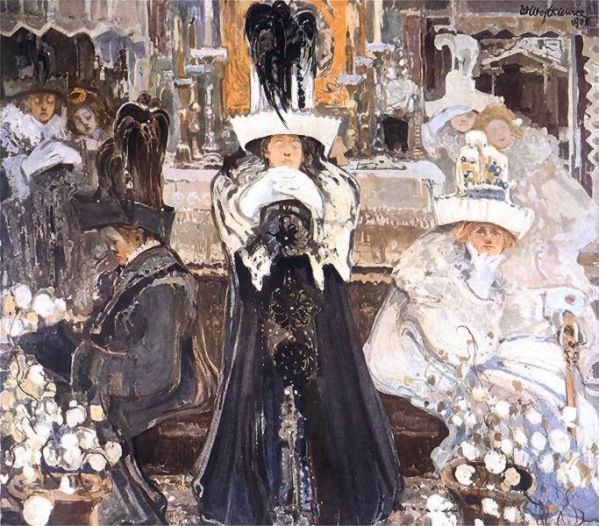
"Meditations.
Ash Wednesday" (1908) |
The cap is looking for a head
and
the mask is looking for a face.
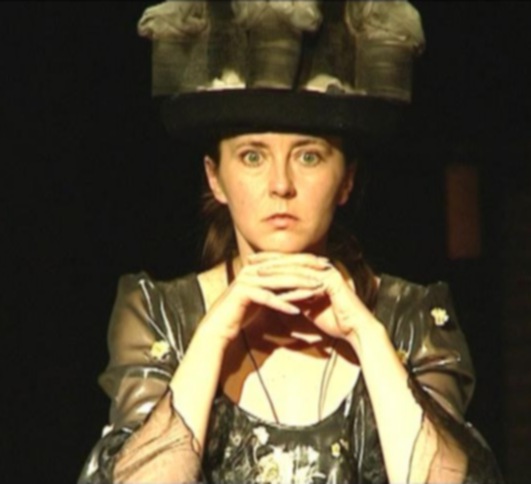
|
|
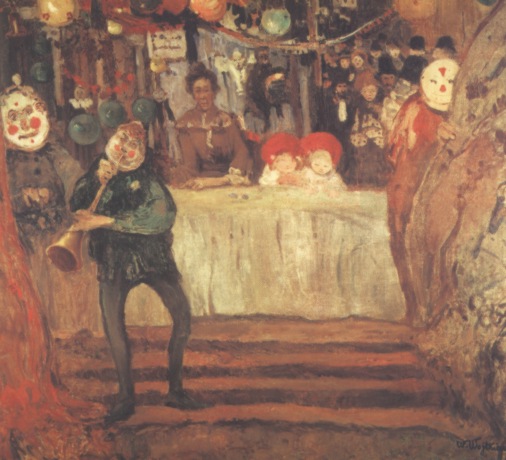
A CIRCUS
"Circus
– in Front of the Little Theatre" (1906-1907) |
...or A BALLET
with a DUMB SHOW
in 3 VARIETIES
ARRANGED BY THE LUCIFER OF THE ART OF DANCE
TO CELEBRATE THE INAUGURATION OF A PREMORTAL DANCING
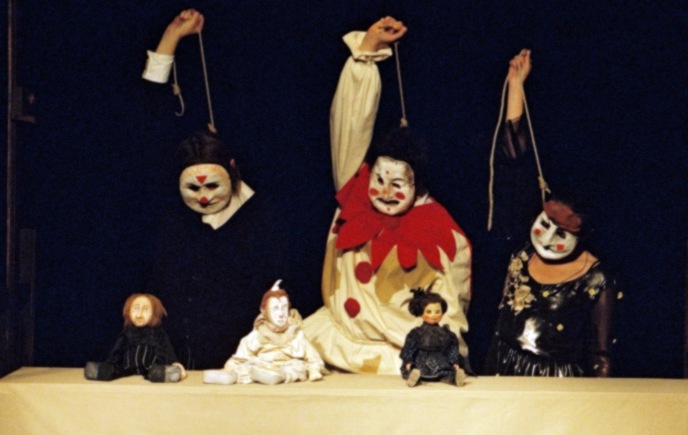
|
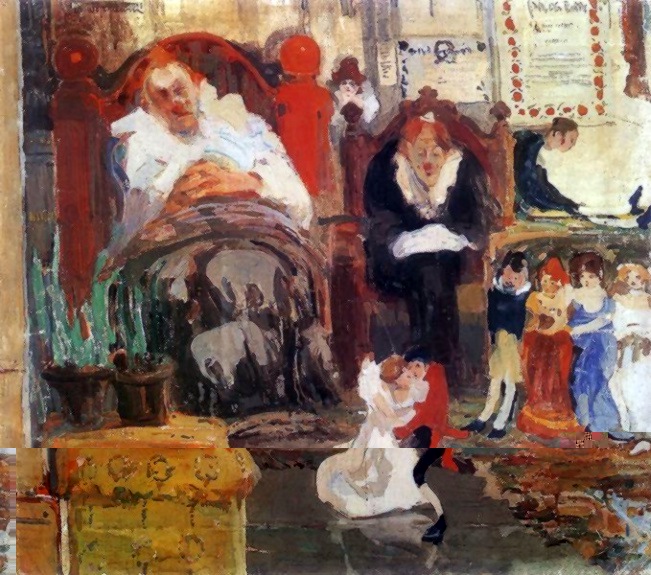
"Circus II' (1907) |
The job of the art is
to reach the essence of people
who lead a double life.
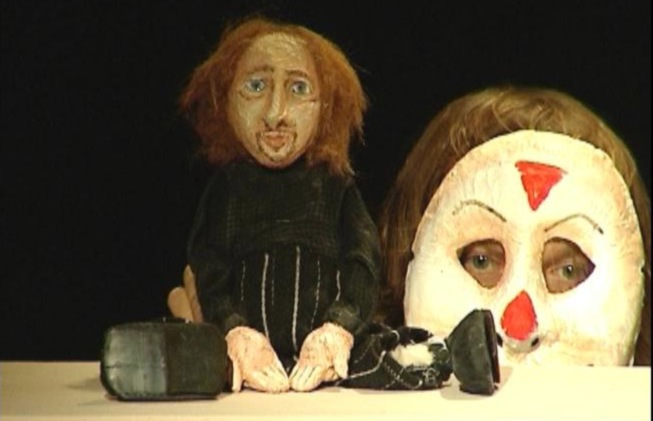
|
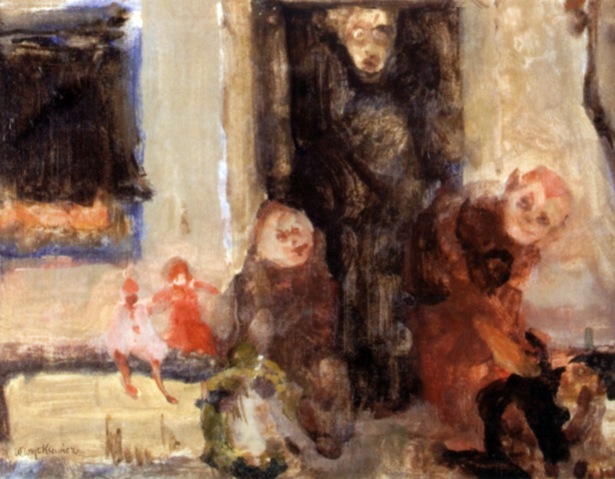
"Composition - masks" (1907) |
We
cannot understand our existence, by any means.
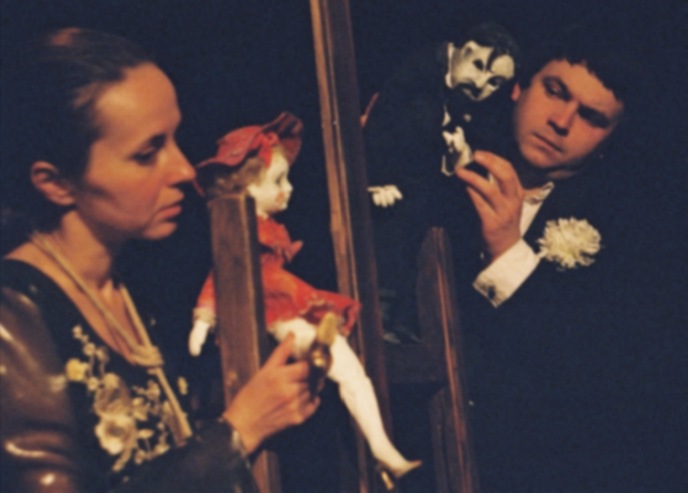
|
|
THE CAVE OF A FLIGHTY WITCH
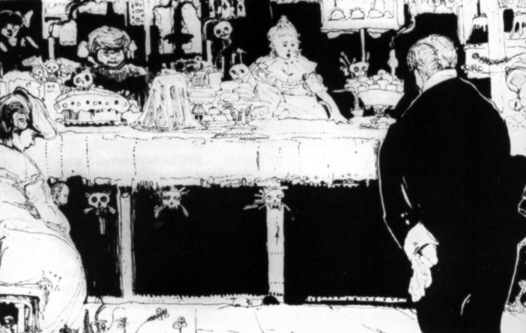
"Poisoned
Cake Shop" (1908) |
...OR
POISONED CAKE SHOP
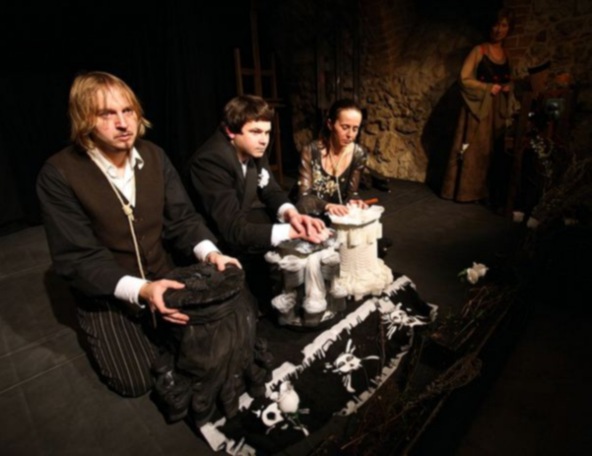
|
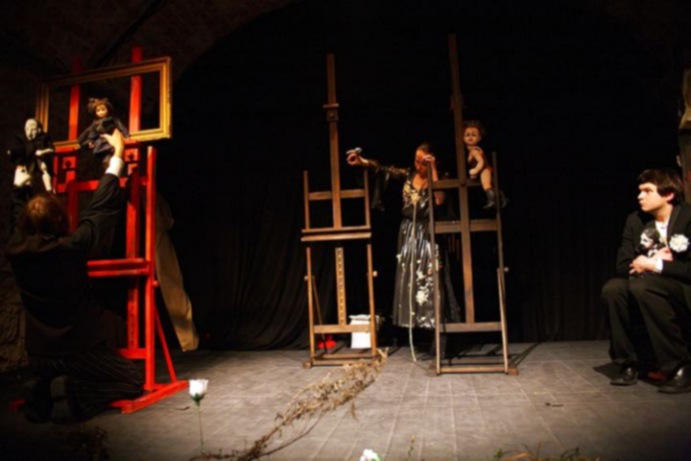 |
The most common internal epilepsies – absolutely harmless. I will
suddenly get sleepy at three p.m. I will slide into the earth and I will
have a nap, not disturbing anyone.
Pierrot – Symbolic
Self-portrait (1909).
|
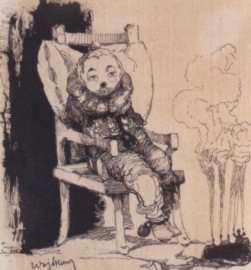 |
xxx
"I
went to the gloomy basement at 1, Kanoniczna St. I, only to be amazed by an
extraordinary performance. A true phenomenon.
Teatr Mumerus. A fringe theatre, which intrigues and enthralls the
audience, in spite of its chamber size performances.
Wiesław Hołdys who is the producer, stage director and script writer, was
inspired by the poetics of paintings by
Witold Wojtkiewicz, which show "two extreme elements - merriment and
sadness, entwined inseparably", as it has been described by
Jerzy Ficowski. This poetics is supplemented by texts of Roman Jaworski, a
forgotten Catastrophic writer, a pioneer of the grotesque in Polish
literature.(...)
His four actors are immersed in the reality of a dream, with its unforeseen
logic, absurd, strangeness, misleading hints and surprising
transformations. The stage hosts "people incarnated in puppets and puppets
incarnated in people (again, a phrase by
Ficowski), and is full of poisoned layer cakes, untended gardens, pathetic
tyrants, dancers, clowns and circus people. One watches a world of uneasy
people forced by instinct to repeat their papers as well as undergo
grotesque metamorphoses and illogical transformations. Where do they go,
what do they want?
Answering such questions is impossible - just like trying to present
paintings by Wojtkiewicz, when one is unable to render it all by means of
banal descriptions. It is a theatre in its pure form - unrealistic, focused
on itself and turning its back to the current reality. It is at times
imperfect, but it seeks no perfection. What an extraordinary performance...
"
Justyna Nowicka
„Circuses and ceremonies, phantoms and dreams ”
Kraków
nr 2-3/2008
Meanders of dream
"The
recent performance by Teatr Mumerus is a composition told with a unique
language of graphic transformations, which could be a record of a dream
woven by a tired brain, or a brain dizzied with hallucinogenic vapours. All
things get transformed: a body of a strange being with a distorted face
turns in a funeral shrine of a man, people and puppets follow the same rules
and the mysterious animator of the whole event plays artificial flowers like
a violin. There is no clearly defined space, there are no references to the
time of the plot, there is no linear plot whatsoever. The world presented to
the audience is hermetic and strongly rooted in the graphic vision by
Witold Wojtkiewicz whose paintings served as inspiration for the
performance. The show, inlaid with texts by Roman Jaworski, balances on
the edge of drugged visions and figments of a mind which is dangerously
disorganised, chaotic and intentionally illogical.
The performance has two main leading motives. The first part is dominated
by the motive of metamorphosis. Flat clothes on the stage begin to move and
actors begin to appear from under them. First one sees a leg, a hand, then
something starts to rhythmically pulsate under the cloth, and in some other
place the cloth begins to bulge. People are hiding underneath... but are
they really people? Not necessarily. One of the actors is dressed up as a
clown, while all the others are performing mechanical gestures, as if moved
by some animator. The clothes begin to move on their own account. First they
become a body of a strange creature which delivers a monologue and then they
serve as a screen covering actors who manipulate puppets; at the end they
cover an actor's body as a tight cocoon.
The other motive, prevalent in the second part of the performance, is the
departure, perceived in a variety of ways. Actors are gradually departing;
their number is reduced, while the attention of the audience begins to focus
on stage props, such as strange hats similar to lamp covers , and on
puppets. The puppets turn gradually immobile; their movement, already
reduced to the minimum, cease to exist, and the puppets turn into inanimate
objects to be contemplated. The final departure of actors reminds slightly
of medieval death dance. The scene becomes empty, as if it waited for
another dream.
The music plays an important role in the performance. It is played live by
Ewa Ryks on percussion and wind instruments. She moves around the scene
with tiny steps, or rather fluent movements, as a good spirit of the space
in which this unusual session is performed. Although live music is combined
with recordings, one does not feel any incoherence or aesthetic discord.
Three actors: Olga Przeklasa, Karol Zapała i Robert Żurek, are close-knit
team of performers. They maintain the formal requirements, not refraining to
any realistic actors, they are focused and exist "inside" their characters.
Zapała, who from the very beginning has been wearing the most eye-catching
costume, initially focuses the attention of the audience on himself.
However, once the spectators are used to the costume, they begin to
appreciate the quality of team acting.
(...) One can imagine this performance with a larger stage and more money
available for the artists. The performance clearly tends towards
spaciousness, and it would resolutely invade any space available to it.
On the other hand, the limitations enforced simplicity, which contributed to
the excellency of the performance. The simplest concepts proved to be the
best: the had of Ewy Ryks appearing from backstage, the functional use of a
few elements of the stage design, and the hushed final scene. One can
bicker about little things such as non-functional puppets, reduced use of
masks (which play an almost symbolic role in the performance, in contrast to
works by Wojtkiewicz), and technical imperfections. However, the
performance as a whole is a unique, comprehensively incoherent and
intentionally inconsistent tale of a dreaming mind."
Hubert Michalak
www.e-teatr.pl
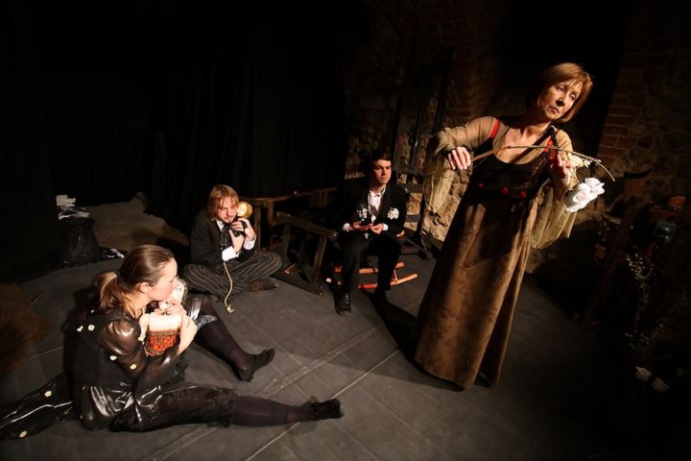
© 2007
mumerus
Wszelkie prawa autorskie zastrzeżone.
![]()




 STOWARZYSZENIE TEATR M U M E R U S
STOWARZYSZENIE TEATR M U M E R U S





















